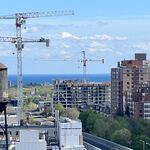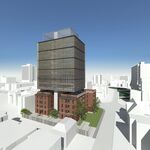W. K. Lis
Superstar
This link has a discussion on Bus operations as precursors of light rail transit.
The formal paper can be downloaded in PDF from this link.
Its conclusion is as follows:
The formal paper can be downloaded in PDF from this link.
Its conclusion is as follows:
This analysis has identified certain factors that may optimize the capability of Bus Rapid Transit to function effectively as a precursor of a light rail transit system. However, it is important for planners to keep in mind that initial system design, to permit a transition, is critical, and major challenges and drawbacks must be addressed and overcome. A major consideration is that the BRT facilities should not represent an obstacle to the subsequent LRT project. As noted, BRT-specific infrastructure (including stations) should ideally be designed to be very low in cost so the sunk cost for BRT is not an impediment to eventual conversion to LRT.
The examples of actual or prospective BRT-to-LRT conversion in both Seattle and Ottawa (and in fact Guadalajara as well) involve some degree of transit service shutdown or disruption on the BRT facility during the conversion process in these types of “high-end”, exclusive facilities. In contrast, a “lower-end” express-bus type of BRT service can probably more readily continue a parallel service on adjacent highway or arterial lanes (if they are available) during the conversion period – although generally without stations and intermediate interchange of transferring passengers (an essential characteristic of LRT which planners should seek in BRT if the BRT service is intended to offer really the same kind of service as LRT).
In addition, the staging and logistics of conversion must be considered, particularly to avoid or minimize disruption of the existing BRT-type service while the LRT installation project is under way. In this regard, alignments in or alongside existing arterials provide at least some opportunity for maintaining a parallel BRT or bus-substitute service; on the other hand, alignments that have appropriated railway ROW for BRT (such as the Ottawa Transitway) make it virtually impossible to maintain a true parallel bus service – thus representing a serious obstacle facing conversion to LRT.
On the whole, the case studies cited suggest that actual experience is still inconclusive as to full cost-effectiveness of some forms of BRT service functioning as precursors to LRT and other type of rail transit. However, several examples approaching implementation in the near future appear to show show promise. As these planned BRT-to-LRT conversions become operational, an updated assessment should be carried out.
Last edited:




